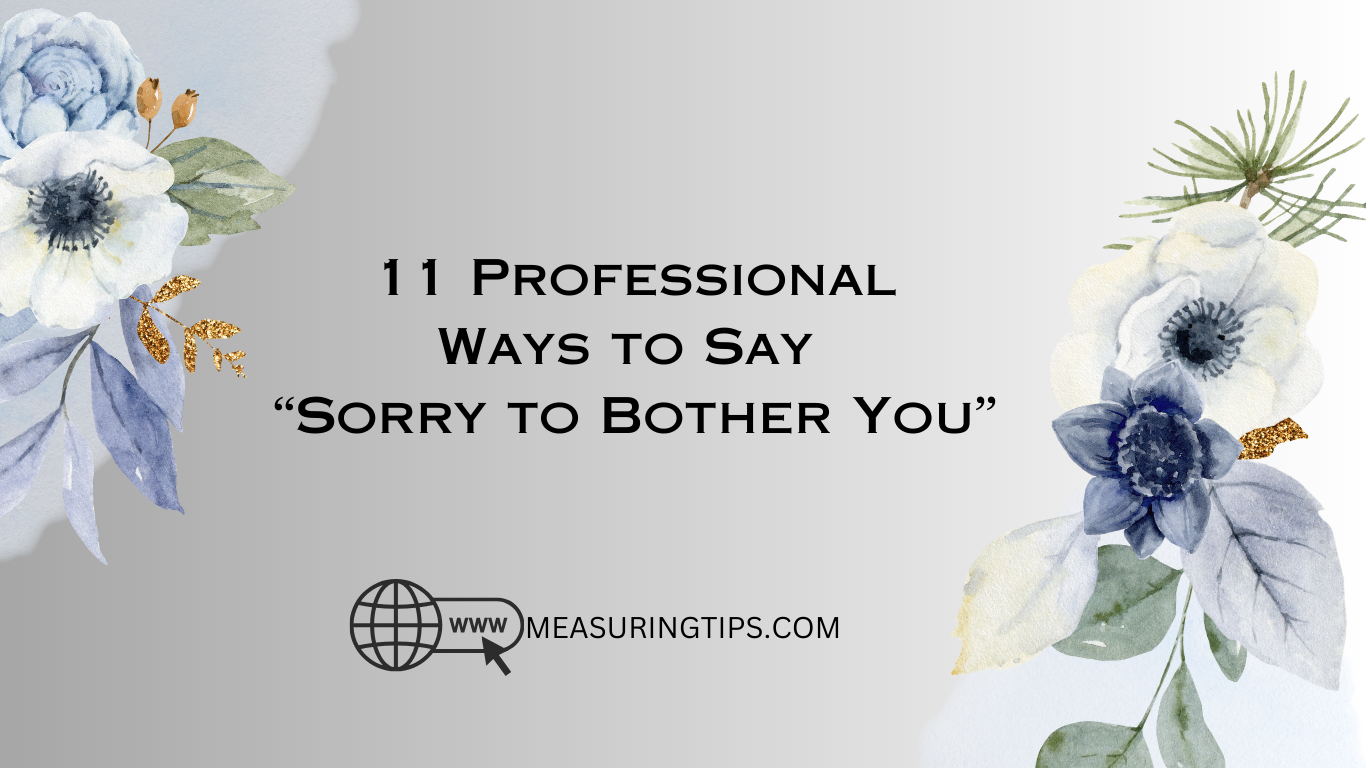
11 Professional Ways to Say “Sorry to Bother You”
We’ve all been there – you need to reach out to someone for work or business purposes, but you don’t want to come across as a nuisance or interrupt their busy day. Saying “sorry to bother you” is a common phrase used in these situations, but it can often feel insincere or overused. So, how can you convey the same sentiment in a more professional and genuine way?
In this article, we’ll explore 11 different ways to say “sorry to bother you” that will help you maintain a professional tone while still getting your message across.
“I apologize for the interruption”
One way to say “sorry to bother you” in a more professional manner is by apologizing for the interruption. This acknowledges that you are aware of the person’s busy schedule and that you understand your message may be disrupting their workflow. It also shows that you respect their time and are not taking it for granted.
Example: “I apologize for the interruption, but I wanted to follow up on the email I sent last week.”
“I know you’re busy, but…”
Another way to show consideration for someone’s time is by acknowledging their busy schedule. This can help soften the blow of your interruption and show that you understand the person’s workload. However, be careful not to use this phrase too often, as it may come across as insincere.
Example: “I know you’re busy, but I was wondering if you had a chance to review the proposal I sent over.”
“I don’t want to take up too much of your time, but…”
Similar to the previous example, this phrase also acknowledges the person’s busy schedule and shows that you are aware of their time constraints. It also conveys that you value their time and do not want to waste it.
Example: “I don’t want to take up too much of your time, but I have a quick question about the project we’re working on.”
“I hope I’m not interrupting anything important, but…”
This phrase shows consideration for the person’s current tasks and responsibilities. It also conveys that you understand the importance of their work and do not want to disrupt it.
Example: “I hope I’m not interrupting anything important, but I wanted to discuss the upcoming meeting agenda with you.”
“I know you have a lot on your plate, but…”
Similar to acknowledging someone’s busy schedule, this phrase also shows that you understand the person’s workload and do not want to add to it. It can also be used to express empathy and understanding towards their workload.
Example: “I know you have a lot on your plate, but I wanted to get your input on the new project we’re starting.”
“I don’t want to disturb you, but…”
This phrase conveys that you are aware of the person’s current tasks and do not want to disturb them. It also shows that you are being considerate of their time and do not want to disrupt their workflow.
Example: “I don’t want to disturb you, but I noticed there was an error in the report and wanted to bring it to your attention.”
“I’m sorry to interrupt, but…”
Using the word “sorry” in this phrase shows that you are aware of the potential inconvenience your message may cause. It also conveys that you are being respectful of the person’s time and do not want to disrupt their work.
Example: “I’m sorry to interrupt, but I wanted to get your approval on the budget for the upcoming project.”
“I know you’re in the middle of something, but…”
This phrase acknowledges that the person is currently occupied with a task and shows that you understand the importance of their work. It also conveys that you are being considerate of their time and do not want to interrupt their focus.
Example: “I know you’re in the middle of something, but I wanted to get your thoughts on the new marketing campaign before we move forward.”
“I don’t want to keep you from your work, but…”
this phrase also shows that you are aware of the person’s current tasks and do not want to disrupt their workflow. It can also be used to express that you value their time and do not want to take them away from important work.
Example: “I don’t want to keep you from your work, but I have a quick question about the client meeting next week.”
“I’m sorry to bother you, but…”
This is a more direct way of saying “sorry to bother you” while still maintaining a professional tone. It shows that you are aware of the potential inconvenience and are apologizing for it.
Example: “I’m sorry to bother you, but I wanted to get your input on the new project proposal.”
“I know you’re swamped, but…”
This phrase acknowledges that the person is currently overwhelmed with work and shows that you understand the pressure they may be under. It also conveys that you are being considerate of their workload and do not want to add to it.
Example: “I know you’re swamped, but I was hoping to get your feedback on the presentation before our meeting tomorrow.”
11 Ways to Say “I Hope This Doesn’t Cause Any Inconvenience”
14 Professional Ways to Say “Thank You for Taking the Time”
Conclusion-Ways to Say “Sorry to Bother You”
In conclusion, there are many different ways to say “sorry to bother you” in a professional manner. By using these phrases, you can convey your message while still showing respect for the person’s time and workload. Remember to use these phrases sparingly and genuinely, as overusing them may come across as insincere. With these 11 professional ways to say “sorry to bother you,” you can maintain a professional tone while still getting your message across effectively.